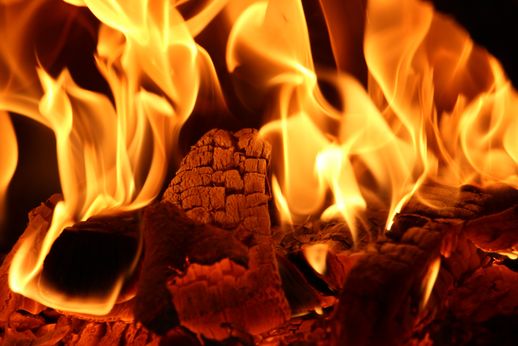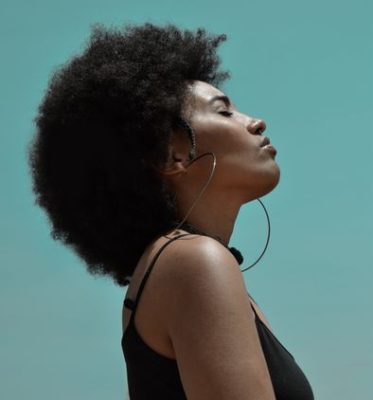Over the years of working with people to manage emotions more effectively, a specific process emerged for me that is based on the inward tools of Yoga. In fact, for those of you who have heard of the Yoga Sutras, the path that is laid out in this text for self-realization are the same practices that I’ve found to be helpful in managing emotions effectively. I’ve put the basics together in the STAY CALM model.
STAY is the foundation and CALM are the actions to take from the information gathered in practicing STAY. Let’s take a look!
STAY
S – Stop and Pause
T – Take and Breath
A – Awareness
Y – Yourself/ Your Reactions
Let’s see how to practice these first four steps.
 Here’s a simple example that most of us can relate to: A woman is driving and all the sudden, someone cuts in front of her to take the next turn coming up. The initial reaction is, of course, shock and anger. Her heart rate shoots up, her breath is high into her chest and she is angry, probably yelling at the car even though they can’t hear her at all. (Ever experience this)?
Here’s a simple example that most of us can relate to: A woman is driving and all the sudden, someone cuts in front of her to take the next turn coming up. The initial reaction is, of course, shock and anger. Her heart rate shoots up, her breath is high into her chest and she is angry, probably yelling at the car even though they can’t hear her at all. (Ever experience this)?
Without knowing the STAY CALM steps, she most likely will stay angry for awhile and maybe even start driving erratically. She might rant to the next person she sees, staying in the fight zone. Her anger will be taking her for a ride long after the incident has occurred and the person who cut her off has no idea how they affected her. The saying from Buddha, “Holding onto anger is like grasping a hot coal with the intent of throwing it at someone else; you are the one who gets burned,” speaks to this situation perfectly. Wouldn’t it be great to move from anger and calm down?
APPLY ‘STAY CALM’ INSTEAD
You can! When this incident happened, having just learned about STAY CALM, this woman first stops to pause and then takes some breaths while becoming aware of the reaction in her body and mind. She can tell her breath is short and shallow. She hears her mind yelling. Because she paused and started to take breaths, her breathing started to lengthen and deepen. She reminded herself that staying upset would only ruin her day and she didn’t want that. She decided to own her reactions and ask what she needed to do to calm her body and mind down. So, the woman pulled her car over to take a moment for herself.
THE EMOTION ISN’T THE ‘BAD GUY’
 Anger is not the issue here. Anger is an emotion and we all have it. The key is to start becoming aware of it and own it so that you can start to use your awareness to be with it. That way you can let it move through rather than holding onto it or avoiding it so that it stays with you. An anger reaction is a signal that you need to stop and investigate to take care of yourself. Blaming others will not help. In fact, blaming disempowers us to do anything at all to change the reaction. Owning your reaction allows space to move through it and make a conscious choice in how you respond to the situation.
Anger is not the issue here. Anger is an emotion and we all have it. The key is to start becoming aware of it and own it so that you can start to use your awareness to be with it. That way you can let it move through rather than holding onto it or avoiding it so that it stays with you. An anger reaction is a signal that you need to stop and investigate to take care of yourself. Blaming others will not help. In fact, blaming disempowers us to do anything at all to change the reaction. Owning your reaction allows space to move through it and make a conscious choice in how you respond to the situation.
CALM
C – Compassion with yourself and others
A – Accept the facts
L – Look at the options
M – Make a decision
After pulling over, the woman continued to breathe, notice her body sensations, emotions and thoughts, owning her reaction. “Wow, that scared the shit out of me! I’m really pissed off that guy made me feel scared. I wish I could scream and yell at him, but that’s not going to happen. I know anyone would feel the same way.”
She examined the facts while being kind to herself. She realized she needed to take care of the energy of the anger in her body. So, she got out of the car and started to shake and move her body to release the tension in her body. The woman looked at her thoughts and started to think about why a person might do something like that. “Maybe someone in his family was hurt and in the hospital. Maybe he was totally not paying attention to where he was at and just reacted…I’ve done that before.” She thought about the times she had cut someone off accidentally. Choosing to see other ways to look at the situation and deciding to go with one of these stories helped calm her down.
CONSCIOUSLY CHOOSING A RESPONSE
The woman thought of this person and said, “I hope you get where you’re going safely.” Then she got back in her car, took another deep breath, and carefully pulled onto the road. By the time she got to her destination, she forgot about the whole incident.
 Once you start to pause, breathe, and become aware of your reaction, then there is space to move through the emotion. You are able to see a wider view of the situation. It allows room for compassion, owning when we’ve done something similar, and looking at the facts rather than the story (Accept). Now, we can look at what perspectives of the situation are out there (Look at the Options). This opens us up to consciously choose the option that helps take care of ourselves (Make a Decision), rather than going with the initial reaction, which is based in the fight, flight, freeze response.
Once you start to pause, breathe, and become aware of your reaction, then there is space to move through the emotion. You are able to see a wider view of the situation. It allows room for compassion, owning when we’ve done something similar, and looking at the facts rather than the story (Accept). Now, we can look at what perspectives of the situation are out there (Look at the Options). This opens us up to consciously choose the option that helps take care of ourselves (Make a Decision), rather than going with the initial reaction, which is based in the fight, flight, freeze response.
WHERE TO START
I suggest first starting to practice ‘Stop and Pause’ and ‘Take a Breath.’ By getting into the habit of these first two steps allows space for the rest of the process to happen. It takes practice! Emotional reactions are powerful and most of those reactions are habits that have formed over time. With conscious effort, the practice of STAY CALM is an empowering way to move past reactions and rest in a more calm response.
Namaste.
